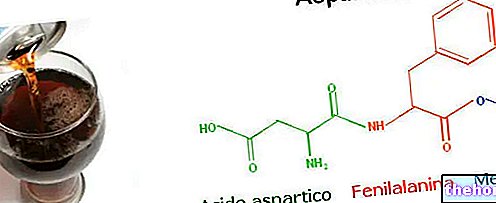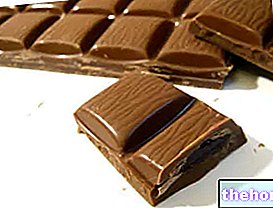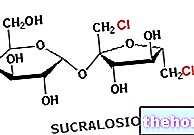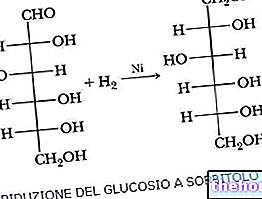Characteristics and use as a sweetener
The name saccharin derives from the Latin "Saccharum" which means sugar.
Commercially it is available in three forms: saccarinic acid, sodium saccharin and calcium saccharin. As a pioneer of alternative sweeteners, saccharin has had a troubled history, but it is the only synthetic sweetener to have been used worldwide for more than a century.
.jpg)
Acid saccharin exists as a white crystalline powder; it is a moderately strong acid and slightly soluble in water. However, considering the high sweetening power (200-600 times higher than that of sucrose), the slight solubility is still sufficient to justify its use as a sweetener.
There are three forms of saccharin on the market, as an acid, as a sodium salt and as a calcium salt. The most used form is that of sodium salt, due to its greater stability and solubility (500 times higher than acid at 20 ° C). More rarely, calcium salt is used, especially by those who follow a diet low in sodium.
BINARY MIXTURES OF
SACCARINE AND:
EFFECT ON POWER
SWEETENER
Aspartame
Synergistic
Acesulfame K
Additive
Cyclamate
Synergistic
Sucralose
Synergistic
Alitame
Synergistic
Sucrose
Synergistic
Fructose
Synergistic
Saccharin and its salts show no detectable decomposition, even for very long periods; another big advantage is the high stability in a wide range of pH, so their taste is not altered nor the sweetness changed. To get an idea of its stability, saccharin is stable in buffer solutions at pH 3.3 to 8.0 after one "hour at 150 ° C. Only under extreme conditions of pH and temperature does it decompose into 2-sulfobenzoic acid and 2-sulfammoylbenzoic acid.
Saccharin and its salts can be used in a wide variety of foods, beverages, cosmetics and pharmaceuticals, as non-calorie, safe and inexpensive sweeteners. In the food industry it is added to soft drinks, fruit juices, chewing gum, jellies, jams, decorations, sauces and fruit-based condiments; in the dietary one it is included in the composition of sweeteners in the form of tablets, powders or liquids. however a bitter-metallic aftertaste, especially at high concentrations.
Safety of use and Side Effects
Saccharin is not metabolized by the human organism; products deriving from its metabolism have never been found, even in minimal traces or in any case detectable with modern analytical techniques. Once taken, it is rapidly absorbed (about 90%) and as such excreted with the urine without being metabolized. It does not influence the glycemic levels and does not supply any energy to the organism; it is therefore indicated as a sweetener in low-calorie diets and in those for diabetics. It also does not promote dental caries.
Saccharin has been the subject of long debates. Although the totality of the available studies show its safety at the usual consumption doses, many doubts have been raised about its toxicity. The controversies are mainly linked to some research that has shown the correlation with bladder cancer in male rats treated with high doses of sodium saccharin. However, extensive human studies have shown that there is no correlation between bladder cancer and saccharin intake (at usual consumption levels).
In 1977, the FDA banned saccharin based on studies in rats; this position was subsequently revised in the nineties by the appropriate world commissions for the protection of health, so today saccharin has been fully reconsidered as a sweetener. Caution in pregnancy due to its ability to cross the placenta.
Other Foods - Sweeteners Acesulfame K Aspartame Sugar beet Sugar cane Sodium cyclamate Dextrose Sweeteners Erythritol Fructose Maltose Mannitol Molasses Saccharin Saccharose Maple syrup Agave syrup Fructose syrup Glucose syrup Sugar sorbitol Articles Stevia Sucralitol sugar SWEETENERS Categories Alcoholic Foods Meat Cereals and derivatives Sweeteners Sweets Offal Fruit Dried fruit Milk and Legumes Oils and Fats Fish and fishery products Salami Spices Vegetables Health recipes Appetizers Bread, Pizza and Brioche First courses Second courses Vegetables and Salads Sweets and Desserts Ice cream and sorbets Syrups, liqueurs and grappas Basic Preparations ---- In the Kitchen with leftovers Carnival recipes Christmas recipes Light diet recipes tici Recipes for the Holidays Recipes for Valentine's Day Vegetarian Recipes Protein Recipes Regional Recipes Vegan Recipes




























